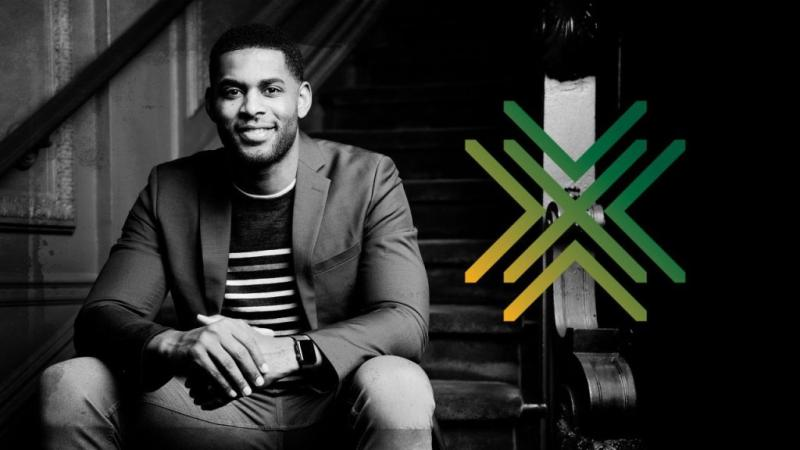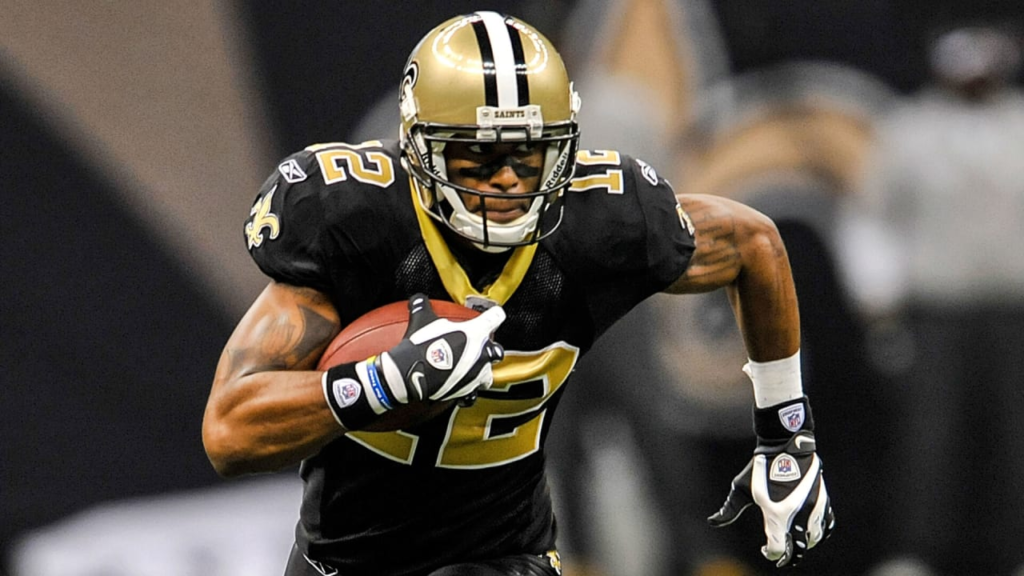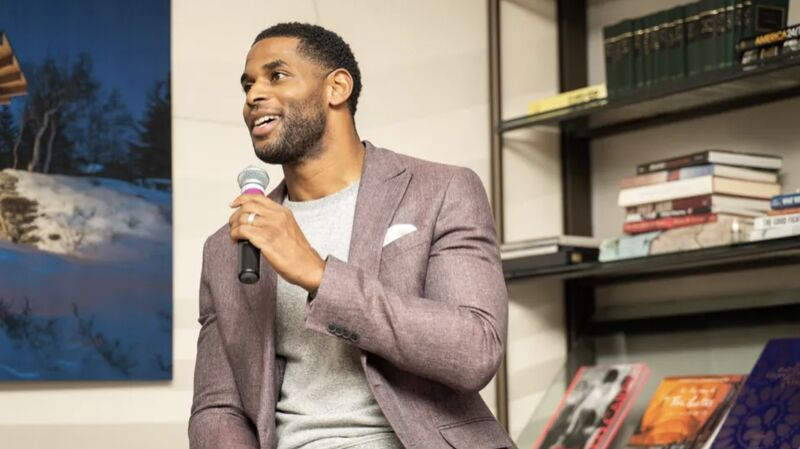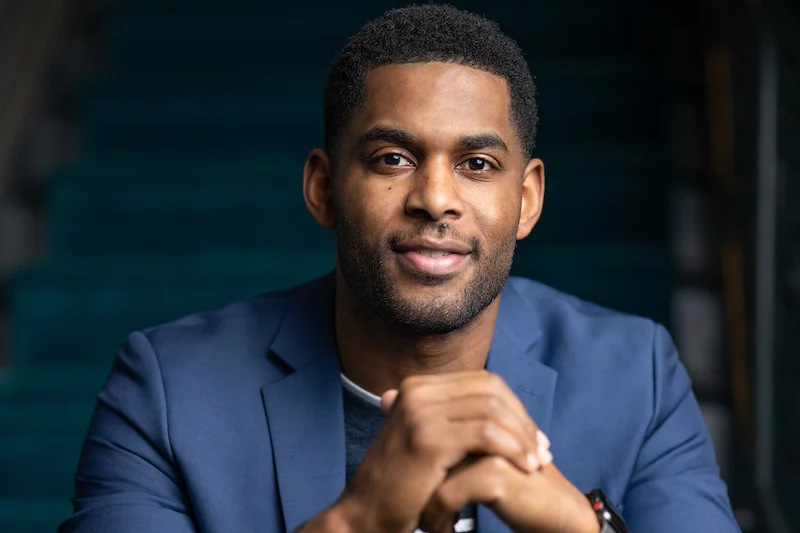Marques Colston has lived multiple lives.
NFL Wide Receiver.
Executive coach and financial advisor.
Educator and professor.
And now an investment manager.
Where most athletes have struggled to make the transition into life after sports, Marques has made it look easy, and now his next venture has the potential to disrupt the entire sports investment ecosystem.
Alongside his partner Nick Edwards, he recently launched Champion Venture Partners and is looking to raise $100 million for the fund.
In this sitdown with Marques, we discuss how their business model is different from most investment firms, why athletes need to involve themselves in investing and venture capital, and lastly, his advice for athletes looking to transition into life after sports.
Hello, who are you and what is the name of your firm?
My name is Marques Colston, and I’m the co-founder and partner of Champion Venture Partners. We’re an investment and management company focused on investing in cash-flowing sports companies.
What was the process of getting the firm off the ground?
My co-founder Nick (Edwards) and I have worked together for the last 4-5 years on various sports tech projects.
Individually, we’ve always seen the untapped potential in unlocking sports ownership and making it more accessible to the stakeholders that hold the ecosystem up.
When we started working together, Our collective vision spurred us to explore different platforms to bring all sports stakeholders to the table to participate in the sports economy from their perspective.
Combined, we have 30+ years of experience in elite sports.
We’ve also seen the intersection of sports and business from every perspective as athletes, investors, business builders, and consultants.
That is what inspired CVP’s unique angle.
We wanted to build a true value-added public PE firm designed to unlock the sports business asset class for generational wealth to even retail investors.

Can you break down the business model of the firm and how it’s different from other funds?
CVP is not a traditional 2/20 venture capital firm. We’re a management company that invests capital in cash-flowing sports companies positioned for growth.
We invest in companies that offer an opportunity to support founders and businesses in a value-added capacity, combining in-house support and coordinating with our trusted network of service providers from marketing, PR, business development, and digital infrastructure.
We also fill operational gaps to support their scaling without burdening the company with numerous expensive hires and costs.
The management company derives its revenues through its operational support of portfolio companies, not a management fee on AUM, which means no fees to our investors.
So investors in our fund benefit from the growth in each company as the NAV of the fund continues to increase while sharing in the profits from the management company operations in the form of a dividend.
They can trade on a secondary market after just 12 months, based on the NAV of the fund — offering liquidity that doesn’t often exist in private investment opportunities today.
What advice do you have for founders or investors looking to raise capital?
Founders often feel like they are in a situation where they have to accept the first capital that becomes available.
The decision to take money from an investor is a long-term relationship.
If you do have flexibility, choose the investor who aligns with your vision, period. The long-term alignment doesn’t mean there won’t be disagreements or friction, but the long-term vision can help to keep them aligned and in support of your growth.
Securing capital that doesn’t align with the long-term vision can create a frustrating relationship for both the founder and the investor with constant conflicting views.
Building a business is hard enough — it becomes even more difficult when you’re fighting with your financial backing the entire time.
Make sure to understand your capital partner’s exit plan as well.
Founders also don’t realize for example, that VCs are fiduciaries for their investors in the fund, and they already have a plan on how to provide returns for their LPs.
If your timeline doesn’t match theirs, at some point there will be a disruption if there is malalignment.

What are some predictions you have for the private equity industry over the next year or so when it comes to sports?
As media rights continue to drive the valuations of sports franchises higher, firms will look for other places to enter sports.
PE firms look to sports as a media flywheel with huge untapped potential — media rights, emerging and niche sports leagues, youth talent development and NIL, group licensing rights in niche leagues and collegiate sports, behind-the-scenes and exclusive content, etc.
Early-stage and growth-stage companies that plug into the flywheel will be consolidated and acquired to develop a sports platform strategy that begins to look vertically integrated.
Many of these opportunities will be aimed at teams and the high-net-worth and elite investor class.
Where there will be a gap in the market, where most folks aren’t looking, is a subset of alternatives that can have outsized returns for even retail investors in diverse sports businesses- like consumer products, experiences, and products that fuel the growth of the sports industry.
Why is important for athletes to get involved in venture or private equity and what else needs to be done to help bridge this gap?
Private investments offer more attractive returns and are a much-needed portfolio diversification tool for athletes.
The challenge is access to quality deal flow that moves beyond the startup stages.
The majority of athletes are not financially suited to invest in startups due to the misalignment between the average career length vs. the time horizon of a startup investment.
The average playing career spans less than 5 years vs. the time horizon of a startup investment can extend up to 10 years. Their money is tied up in an illiquid investment at a time when they are looking to manage a sudden loss of their primary income source.
Part of bridging the gap is creating access to deal flow at different stages that offer varying risk and return profiles that may fit the individual’s life circumstances better.
One of our drivers at CVP is to create access to later-stage companies that allow athletes to leverage their lived experiences to invest in businesses they can impact.
The other driver that is tailored to the specific needs of out-athlete limited partners (LPs) is the 12-month lock-up period that offers liquidity.
Can you talk about the transition into life after sports and why so many athletes struggle with it?
The sports ecosystem is built on the inexperience and ignorance of young athletes. Much of the business of the industry is about extracting value from athletes.
There are very few resources that exist solely to help athletes build themselves holistically.
The average person who loses a job goes through a challenging time. Their ability to bounce back is rooted in having a resume that puts them in a position to find a job in a similar field or one that matches their experience.
For athletes, the jobs are scarce and finite. And once you lose your job, there are no other ones like it available.
Your resume doesn’t qualify you to enter other fields on a similar elite level you’re leaving, and most people only see the skills you’ve developed through the lens of entertainment.
Your team, financial advisor, agent, and marketing manager are only positioned to help you as long as you’re an asset to their business model.
Eventually, you find yourself trying to navigate a new world, without a support system, fighting the perception that your skills and abilities only apply to the sport you play.
Most people also know you for doing one thing.
Part of your family’s identity is tied to your role as an athlete, so they are going through their own transition as well.
Your team has deprioritized you because they have to keep running their business and find the next client, and you find yourself in a new position with a support system that has changed overnight.
That is ground zero for most people in the transition.

Are there any particular tools, software, or resources you use to be more productive?
One of my favorite tools right now is ClickUp. The ability to have one central hub for all of my projects is key.
It has a ton of built-in features and automation that create seamless workflows; and also integrates with some of the other platforms I use, like Google Workspace and Zapier which limits the need to keep switching platforms.
What advice do you have for founders trying to build a team and hire talent?
I was once told by a business partner and good friend that as a leader, I was functioning as a follower.
From my perspective, I knew I hired a talented team, and my approach was to delegate and give people as much autonomy as they could handle well.
On the other side of the coin, those team members could have gone to other places to work. They were working with me because they believed in the vision, not because the job was so much different than any other they could find.
Building around a solid vision allows people to see themselves within it and contribute to it from their own perspective.
But make no mistake, there has to be a clear vision. And as a founder, you’re the only one who can establish it.
I would urge all business leaders to stand out in front of your business. People are just as attracted to your vision as they are to the compensation.
Give them what they showed up for.
Where can people find out more?
Visit our website: championpartners.co
LinkedIn Pages:

